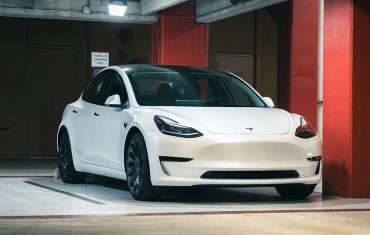
Looking at the economic horizon in 2022
For your fleetWith data suggesting the wave of Omicron infections that rattled Australia’s summer holidays may have plateaued, and as we approach the end of the third quarter of the 2021-2022 financial year, the economic outlook for both the Australian and global economy in 2022 appears noticeably different to last year’s.
The overriding expectation from analysts is that 2022 will see a slowdown in economic growth as supply chains continue to struggle to meet consumer demand for goods and services. Due to supply chain challenges, inflation is expected to have a major impact on the economic conditions of 2022. These inflationary pressures are forecast to lead to interest rate hikes, with many of the world’s major central banks, such as the US Federal Reserve and the Bank of England, tipped to raise their cash rates by as many as 25 basis points by December.
This expected rise in official interest rates will have important implications on fleet and finance managers who are planning to upgrade their vehicles in 2022, or businesses who have put off fleet upgrades in the wake of delivery delays caused by shortages in the manufacture of semiconductor chips in Taiwan and South Korea.
Australia’s economic outlook
In December 2021, Federal treasurer Josh Frydenberg released the Federal Government’s mid-year financial outlook (MYEFO), in which the treasury predicted a “solid economic bounce-back from COVID restrictions.”
According to the figures contained in the report, the Australian economy is anticipated to grow by 3.75 percent in 2021-22, and 3.5 percent in the 2022-23 financial year. In 2023-24, growth is expected to be 2.25 percent and, in 2024-25, that figure is tipped to rise slightly to 2.5 percent.
Jobs market
The jobs market is also expected to see growth in the coming 12 months, with most forecasts anticipating growth in jobs at around 3.5 percent to 4 percent. The re-opening of Australia to tourism and international visitors is anticipated to alleviate staff shortages in several industries – like agriculture, retail and hospitality – as well as easing supply-chain pressures.
Inflation
Inflation and its effects on interest rates loom as a significant focus for the Australian economy this calendar year. Sharp increases, both here and overseas in 2020-21, has prompted fears that inflation is on the rise.
“Headline inflation was 3.5 per cent in the year to December 31, while underlying inflation – the RBA’s preferred measure – was 2.6 per cent, solidly within the central bank’s 2 per cent to 3 per cent target band,” wrote Ronald Mizen in the Australian Financial Review.
Interest rates
Analysts at Morgan Stanley believe a rise in interest rates fuelled by inflation is likely to occur in 2022: “The Reserve Bank of Australia continues to stay dovish, even as inflation persists in its target band. [We expect] further macro-prudential tightening to be announced in the second half of 2022 as [household debt as a percentage of disposable income] moves to record highs. These measures allow the RBA to remain patient in terms of rate rises, although it’s expected to ease a quarter earlier than previously expected.”
More precisely, the inflation results for 2021 and wage growth expectations for 2022 have led both the Chief Economist of the Commonwealth Bank, Gareth Aird, and an economist at Deutsche Bank, Phil O’Donaghue, to suggest that interest rates are likely to rise by the middle of 2022.
“Our expectation is for the labour market to continue to tighten, for wages growth to accelerate and for underlying inflation to push towards the top of the RBA’s target band from here means the risk lies with an earlier [interest rate] hike than August 2022,” Ronald Mizen in the Australian Financial Review quotes Aird as saying.
Outlook summary
The overall economic outlook for Australia in 2022 is largely optimistic – however, with the important caveat of the impacts of any new strains of COVID-19 and its virulence on the economy.
“Australia is now much more match fit for fighting COVID,” notes Chris Richardson from Deloitte. “We’re well vaccinated, we’ve got the hang of juggling lockdowns and other COVID challenges, and we’re cashed up with dollars left over from when the pandemic meant that money couldn’t be readily spent. That combination spells resilience and recovery.”
Global economic outlook for 2022
On the world stage, the global economic outlook for 2022 is unfortunately less optimistic than the Australian one. Central banks – like the World Bank and the International Monetary Fund (IMF) – expect a “pronounced slowdown” in growth, as increasing numbers of COVID cases present, supply issues push prices for food and energy upwards, and rising employment hit the world’s major economies such as China, Europe, UK and US.
The World Economic Forum forecasts that “after rebounding to an estimated 5.5% in 2021, global growth is expected to decelerate markedly in 2022 to 4.1%, reflecting continued COVID-19 flare-ups, diminished fiscal support and lingering supply bottlenecks”.
In their World Economic Outlook Update, published in January 2022, the IMF take the position that “[m]onetary policy in many countries will need to continue on a tightening path to curb inflation pressures, while fiscal policy – operating with more limited space than earlier in the pandemic – will need to prioritise health and social spending while focusing support on the worst affected.”
The US economic outlook
Expectations of the United States’ economy in 2022 mirrors that of the global outlook.
An analysis by independent body The Conference Board suggests that US Real GDP growth “will come in at 3.5 percent (year-over-year). Looking further ahead, we forecast that the US economy will grow by 2.6 percent (year-over-year) in 2022. This forecast contains a number of downward adjustments associated with Omicron, inflation, monetary policy, and other factors.”
Interest rate hikes are also on the menu for the US economy across 2022: “We expect year-over-year inflation to peak in Q1 2022 and then gradually moderate to a still high 3.0 percent in Q4 2022,” The Conference Board predicts. “To combat inflation, the Federal Reserve has indicated that its Quantitative Easing program will end in March and that rate hikes will follow shortly thereafter. We now anticipate at least four 25 basis point rate hikes in 2022 with more possible in 2023.”
Likewise, Bloomberg reports that Goldman-Sachs analysts informed clients in January 2022 they anticipate the US Federal Reserve will raise interest rates by 25 basis points on five occasions over the next year, when most sentiment suggests four separate interest rate hikes by December 2022.
The UK economic outlook
In the UK, the economic outlook for 2022 is a positive but conservative one (in the financial sense, not political). Bank of England, OECD and KPMG modelling all suggest around 3.9 percent to 4.5 percent growth in the economy for 2022, then slowing to around 2 percent in 2023.
“Consumption,” notes the OECD report, “is the main driver of growth during the projection period. Business investment will improve but continues to be held back by uncertainty, increased border costs following the exit from the EU Single Market [will weigh] on imports and exports, and unemployment will continue to decline.”
Inflation-driven interest rate rises are also a concern in the UK for 2022. The OECD believes that a rise in inflation will be driven by “higher energy and commodity prices and continuing supply shortages.”
Economists at KPMG expect inflation to peak at around 6 percent but “as energy prices gradually stabilise and supply chains recover, we expect inflation to moderate significantly by the end of this year and to approach the Bank of England’s 2 percent target by [April 2023].”
“The current elevated level of inflation could see the Bank of England act relatively swiftly this year in an attempt to stem any permanent rise in inflation expectations,” notes Chief Economist at KPMG Yael Selfin. “We currently pencil in three possible interest rate rises in 2022; in February, August, and November.”
In conclusion
For the Australian and the global economy, 2022 looks to be a mixed bag. While organisations such as the International Monetary Fund and the World Bank anticipate a slowdown in growth, analysts closer to home are predicting a measured and sustainable rebound from COVID-enforced restrictions.
However, looming large over international and local economic analyses is, of course, the ongoing pandemic. While the Omicron variant appears to have reached its zenith, the impacts of the virus’ next mutation will have a large say in the performance of the global economy in 2022.
As well as COVID, interest rates and inflation will have a significant impact on the performance of many of the world’s biggest and most influential economies.
A rise in official interest rates will leave fleet and finance managers with a stark choice: join an already lengthy waiting list for new vehicles and hope the rates don’t go up too much between now and when the vehicle arrives, or wait for supply shortages to ease and hope you can access lower purchase prices that might offset any increases in the cost of borrowing money later in 2022.
Need help with your fleet navigating the ups & downs of the 2022 economic outlook? Speak with SG Fleet/LeasePlan.
 Driving Insights
Driving Insights



